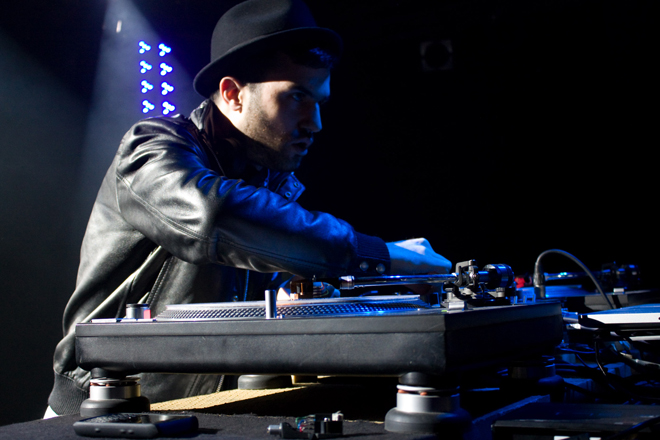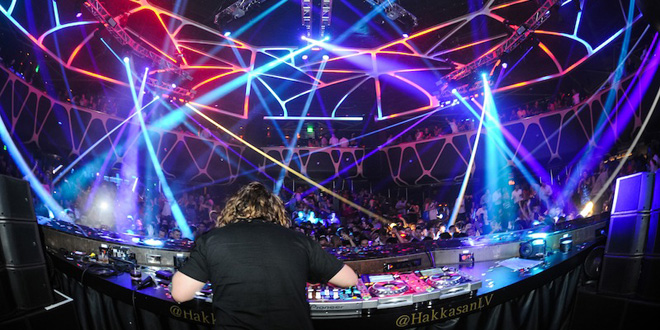By now, you’ve heard that Kaskade is doing a nine-city club tour called “It’s You, It’s Me Redux.”
The producer born Ryan Raddon went onto explain his vision on his Tumblr, saying, “My intention: to play small clubs, and for all who participated to be taken back a decade, when it was all about the music.”
As well, the “I Remember” producer’s taking a close-to-authentic club approach, with no visuals to back him up. “So I thought in April, it would be cool to go out and play some of the original rooms that I used to play 10, 12 years ago.
For those of you unfamiliar with Kaskade’s trajectory, the tour celebrates the 10th anniversary of his debut album, It’s You, It’s Me — and likely a time when he, in fact, did do true club sets, rather than the typical one- to two-hour festival bombast focusing on the hits.
However, Kaskade’s riding a burgeoning trend in the mainstream electronic dance music community – to go back to their roots and away from the big-room EDM sound and festival format. You’ve got Porter Robinson talking about making a “true” electro album, Avicii doing his country-house thing with instrumental collaborators, Marcus Schulz working with Cece Peniston, and Skrillex scheduling a warehouse party tour.
As older performers, particularly Sasha, Tommie Sunshine, The Chemical Brothers in recent years, criticizing the newer crop of performers, opting for tradition is a two-pronged move: One, to show your skills, and two, to prove you’re a real DJ. Yet, major artists taking a “legit” approach has both positive and negative connotations.

Showing You’re a “Real” DJ
There was a time – actually, make that a decade ago – when even producers making the hits, like Tiesto, Armin Van Buuren, Benny Benassi, and Paul Oakenfold, did authentic DJ sets. Yes, a hit or two remixed might have crept in there, but their skills, background, and abilities resulted in that slow, ever-evolving build that lasts through multiple hours.
If you’re old enough – and today’s typical EDM fan likely isn’t – you can recall when some of these major performers did true club setlists, even as recent as the late ‘00s. In fact, about five years after “Satisfaction,” I caught Benassi doing such a set – not this “two hours on, then I’m gone” attitude – at Room 960 in Hartford with a CDJ and – gasp – a book of CDs he went through during the night.
Yet, the festival setlist now becomes the norm. Any time you even venture to a major club, such as Pacha NYC in New York or practically any big place in Las Vegas, that under two-hour format is what you expect. Hits dominate, fans have their hands and phones in the air, and, unless you’re Fedde Le Grand or Carl Cox, it’s just a string of hits over a quality sound system played to a smaller crowd.
That has to change. It used to be you’d go to the club to hear what innovative, twisted thing a DJ would come up with – or, in the case of older DJs, to hear their prowess at putting together a master setlist. Now, with a few exceptions, it’s a night of spacebar pushing.
Enhance Credibility
Someone like Kaskade – or even, really, any big-name DJ who rose to prominence before 2010 – already has a strain a credibility in the electronic dance music world, however how small. Maybe fame roughed it up a bit to the point he’s doing the routine hits-centric set; maybe be grew lazy, what with the dollars a big club in Las Vegas commands for so little work. But his success sits on years of experience, of rising up from obscurity, of coming from a time when, particularly in the U.S., no one cared about dance music, because electronica and electro passed, and hip-hop was all the rage in the mainstream clubs.
But post-2010, the club is out of the picture, save for as a promotional tool. Although Skrillex claims he’s done the clubs and warehouses in Los Angeles, between his emo and dubstep careers, but with festivals and amphitheaters making his tour schedule these days, that period is but a footnote.
As well, unlike someone like Kaskade, Tiesto, Fedde Le Grand, or Carl Cox, Skrillex’s career hinges entirely on his production abilities; true DJing is strictly secondary. As younger performers without the extensive background that Kaskade has get flack for rising too high too quickly and having careers based entirely around one hit, showing you can stand in a booth and do a four-hour club set that involves actual beat-matching and originality gets you within the circle of established credibility.
In short, Sasha and The Chemical Brothers are less likely to talk trash about you on Twitter.

Exclusiveness
Deadmau5 previously spoke about the VIP crowds taking up the front of the stage in South Beach, merely standing there while the “true” fans remained at the rear, but at a recent gig, a 250-minute set without his mouse head and minimal crowd interaction, exclusiveness undermined the traditional vibe.
Granted, the performance was free, but with limited space at clubs, this often means that the fans who wait the longest to get in, who have VIP access, or simply have the money get let through the velvet rope. Unlike the amphitheaters and concert halls holding several thousands, clubs only offer enough space for a fraction of this amount. Essentially, especially as tickets get sold out quickly, listeners get excluded from the experience.
Define “Club”
Plenty of DJs do club-only tours – but, as you can see from Fedde Le Grand’s schedule, a large portion are the “super clubs” of Las Vegas, Ibiza, Chicago, and New York.
So then question, then, becomes, “If a DJ’s doing a club-only tour, what counts as a ‘legit’ club?” Is it avoiding Pacha NYC, Cielo, and Marquee in Manhattan to play in a dank, hole-in-the-wall in Bushwick? Is it seeking out the same venues the original Techno and House DJs played in? Is it just under a certain capacity? Does bottle service mean someplace is off limits? And, what about a music venue, like the Roseland in New York, that was once a standard club but now functions as a concert hall?
With clubbers standing around the DJ booth and concertgoers dancing in Radio City Music Hall, EDM blurs the line between both, to the point that a club tour simply means avoiding the large stadiums and festivals for someplace that’s simply midsize, enclosed, and doesn’t have screens for projecting visuals.




